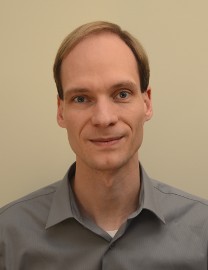RSS 2020 introduces the new RSS Test of Time Award given to highest impact papers published at RSS (and potentially journal versions thereof) from at least ten years ago. Impact may mean that it changed how we think about problems or about robotic design, that it brought fully new problems to the attention of the community, or that it pioneered new approach to robotic design or problem solving.
With this award, RSS generally wants to foster the discussion of the long term development of our field. The award is an opportunity to reflect on and discuss the past, which is essential to make progress in the future. The awardee’s keynote is therefore complemented with a Test of Time Panel session devoted to this important discussion.
It is our great pleasure to announce that this year’s Test of Time Awards goes to the pair of papers:
Frank Dellaert: Square Root SAM. Proceedings of Robotics: Science and Systems I, 2005.
Frank Dellaert and Michael Kaess: Square Root SAM: Simultaneous localization and mapping via square root information smoothing. International Journal of Robotics Research, 25, 1181-1203, 2006.
for pioneering an information smoothing approach to the SLAM problem via square root factorization, its interpretation as a graphical model, and the widely-used GTSAM free software repository.
Please joint the awardee’s keynote on July 14, 17:00 UTC:
Title: From Square Root SAM to GTSAM: Factor Graphs in Robotics
Abstract: Many estimation, planning and optimal control problems in robotics have an optimization problem at their core. In most of these optimization problems, the objective function is composed of many different factors or terms that are local in nature, i.e., they only depend on a small subset of the variables. 10 years ago the Square Root SAM papers identified factor graphs as a particularly insightful way of modeling this locality structure. Since then we have realized that factor graphs can represent a wide variety of problems across robotics, expose opportunities to improve computational performance, and are beneficial in designing and thinking about how to model a problem, even aside from performance considerations. Many of these principles have been embodied in our evolving open source package GTSAM, which puts factor graphs front and central, and which has been used with great success in a number of state of the art robotics applications. We will also discuss where factor graphs, in our opinion, can break into other fields of robotics besides mapping and state estimation, where these graphical models have typically excelled.

Frank Dellaert, with Sam Georgia Institute of Technology |
Biography:
Frank Dellaert is a Professor in the School of Interactive Computing at the Georgia Institute of Technology and a Research Scientist at Google AI. While on leave from Georgia Tech in 2016-2018, he served as Technical Project Lead at Facebook's Building 8 hardware division. Before that he was also Chief Scientist at Skydio, a startup founded by MIT grads to create intuitive interfaces for micro-aerial vehicles. His research is in the overlap between robotics and computer vision, and he is particularly interested in graphical model techniques to solve large-scale problems in mapping, 3D reconstruction, and increasingly model-predictive control. The GTSAM toolbox embodies many of the ideas his research group has worked on in the past few years and is available at https://gtsam.org. |
|---|---|

Michael Kaess Carnegie Mellon University |
Biography:
Michael Kaess is an Associate Research Professor in the Robotics Institute at Carnegie Mellon University (CMU). Prior to joining CMU, he was a Research Scientist and a Postdoctoral Associate in the Computer Science and Artificial Intelligence Laboratory (CSAIL) at the Massachusetts Institute of Technology (MIT). He received the Ph.D. and M.S. degrees in Computer Science from the Georgia Institute of Technology. He was one of the two runner-ups for the 2012 Volz dissertation award for the best U.S. Ph.D. thesis in robotics and automation, and also received four runner-up best paper awards at ICRA and IROS. He serves as Associate Editor for the IEEE Robotics and Automation Letters and has previously served as Associate Editor for the IEEE Transactions on Robotics. His research focuses on probabilistic methods for robot perception, in particular efficient algorithms for navigation, mapping and localization. He is the main author of the incremental smoothing and mapping (iSAM/iSAM2) algorithms. |